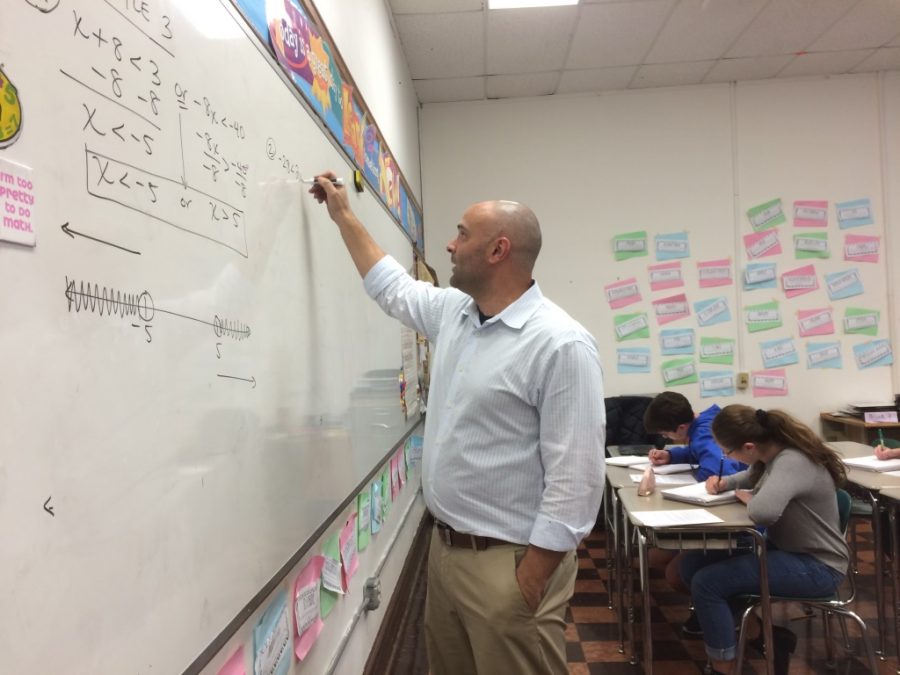Math program makes adjustments to curriculum
Photo Credit: Lillie Daschil
Mr. Carlo Santaniello teaches to his middle school class, while they attentively take notes and further their understanding of slope.
November 18, 2016
The math program at the middle school and high school has undergone many curriculum and course changes throughout the past few years to broaden the academic track for students to complete Calculus in high school without taking two math courses at once. The major adjustment was for students to take Algebra in eighth grade.
Students, who excel in mathematics, can take more rigorous courses and students, who face larger struggles, are able to fulfil their understands and requirements by retaking courses if necessary.
The math program’s track starts in seventh grade, when students take Pre-Algebra. From there, eighth graders take Algebra I, freshman enroll in Geometry, sophomores advance to Algebra II, juniors take Pre-Calculus, and seniors finish off with Calculus.
The curriculum has not always been like this. Four years ago, students took Algebra during their freshman year not in eighth grade. This raised a red flag because students could not enroll in Calculus before graduating without taking two math courses at once.
When Dr. Kathleen Regan, the director of Curriculum and Instruction, was hired in Glen Rock, she initiated the change because there was a disadvantage for students interested in pursuing engineering or a science in college because they would not have the math requirement necessary for the application.
“We had to under a normal flow be able to get students to take Calculus by the time they were seniors,” Regan said.
It is very crucial that the math and science courses correlate on a student’s academic track because many math concepts are in science. For example, it is important to take Algebra II at the same time as Chemistry for students to better understand both their math and science class.
Before Regan addressed this issue, all middle schoolers and freshman took an integrated science course, which is an introduction to all the sciences, each year. Regan found that freshman were more than capable to study Biology and it was a good course to take with the change of Geometry.
Mr. Carlo Santaniello, an eighth grade Algebra teacher, believes that not every student can think as abstractly as the Algebra curriculum wants them to. Students, who struggle in math in sixth and seventh grade, have even more struggles in eighth grade.
“This could lead to them feeling helpless and feeling like they can’t do the math,” Santaniello said.
Lucy Cunningham, a freshman who enrolled in Algebra II Advanced, said that math is one of her most difficult subjects in high school. She has been a grade ahead for math and science since the fifth grade.
“Algebra II is a subject that you can’t just instantly learn about,” Cunningham said.
Regan also switched to Algebra to eighth grade, so there was more leveled playing field for math and sciences tracks in middle school. If students did not fall into a certain approach, their “math and science track would be totally thrown off” their whole high school career.
Students can still be challenged by taking an intensive Pre-Algebra course in seventh grade if desired. Students enrolled in intensive classes still follow the same course, but they take some of the problems to “the next level.”
Freshman students, who took standard Algebra, are eligible to take Honors Geometry if they desire that academic track and they will not be behind.




